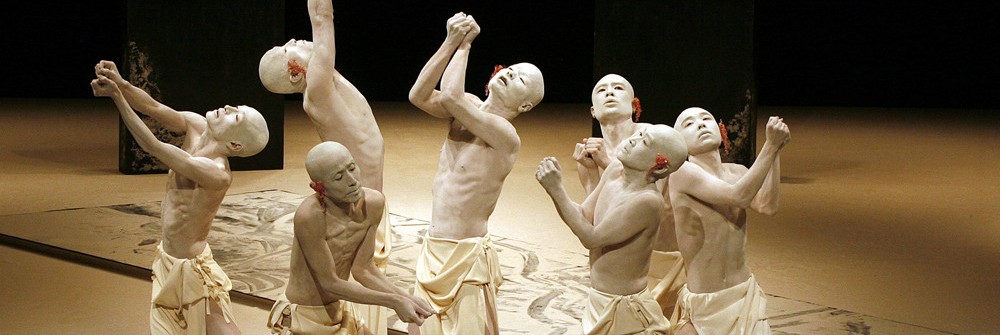This week I have been watching my Theatre Arts students give a variety of presentations on theatre traditions originating from their own cultures. Teaching in an international school means that these are always wonderfully varied. What struck me this time however, were the number of students who had identified puppet theatre forms. This got me thinking again about the resurgence of puppetry. I then read this article, by Beccy Smith, in Exeunt. In it she ponders the attraction to a modern audience. Smith, as well as being a dramaturg and writer, runs a company called Touched Theatre who are performing a piece called Blue at the Suspense Festival in London.
What is it about puppets that so captures the contemporary imagination? In recent years life-size horses have stormed the West End, a decidedly larger-than-life elephant has paraded down the Mall and beautifully crafted figures of myriad shapes and sizes have entertained audiences in touring theatres up and down the country. Of course, as an art-form puppetry is not new: forms like Greek Karagoz and Indonesian Wayang Kulik can be traced back to ancient times and even our ‘own’ Mr Punch boasts a fairly impressive lineage from as far back as the writing of Pepys diaries and probably beyond. But a growing interest in puppetry has made itself felt of late and there’s a distinct sense that this oldest of theatrical languages is returning en vogue…..What puppetry draws together in these disparate strands is an emphasis on visual storytelling, on expressing meaning through action and image that I think speaks particularly vividly to contemporary audiences versed in media imagery and embodied theatrical languages.
I started to get especially interested in the connections between puppetry and other performance languages when making a show called Headcase, in 2011 which was collaboration between a dancer and a puppeteer. The show set out to portray the emotional experiences of teenagers experiencing mental heath difficulties which were themselves difficult to articulate by their sufferers but which we found, by working with the young people over a period of time, could be effectively expressed through movement and gesture. We discovered that dancers have an intuitive understanding of puppetry because of the formal qualities they share in portraying feeling and idea through movement and rhythm (we also learned a lot about the age-old connections of puppetry and therapy, but that’s another article).
Puppetry has the exceptional ability to combine within itself the abstract with the specific. Puppet figures, embodied as bug-eyed capering monsters or delicately floating wraiths, present character with engaging immediacy. Puppets can talk – sometimes you can’t shut them up – they can do text from Shakespeare to Beckett though they are decidedly not literate because so much of the meaning they convey is expressed through their material form – how they look, how they move, what they are made of. For puppets subtext is in the body. The pretensions of a hero are punctured by his being made out of sponge; a romantic heroine’s mortality is embedded in the fragile paper of which she’s formed. Puppetry is able to borrow the most powerful elements of a range of art forms – the rich metaphors of of the visual arts, the dynamic expressiveness of dance, the detailed articulacy of poetry. They’re a wonderful theatre mongrel for a post post modern audience versed in Brecht and Lecoq.
And what is most powerful of course is puppetry’s status as shared fantasy. The wiling suspension of disbelief is in-built to this form and central to its magic, its emotional resonance. In making Blue, the new interactive mystery we ail be opening at SUSPENSE, we wanted to test out how close to the audience we could bring our puppets and still invite them to take an imaginative leap. Blue explores working with audiences moving though different spaces on the hunt to discover what has happened to a missing young woman …… and this amplifies the storytelling power of the placement and disclosure of puppets and objects. Whilst our array of suspects characters speak much but reveal little, the memory, metaphor and magic that power the story’s real action express themselves through the puppetry and video that haunt their spaces.
You might argue that the appeal of puppetry to today’s audiences is as a way to step out of some of the grimmer realities of our current realities, to reach for the fantasy and playfulness of childhood, but my feeling is that the artistic riches of the art form empower it as a vehicle through which to plumb the depths and articulate the heights of human experience – a range that’s much in evidence in the lovingly crafted programme at this year’s SUSPENSE.

